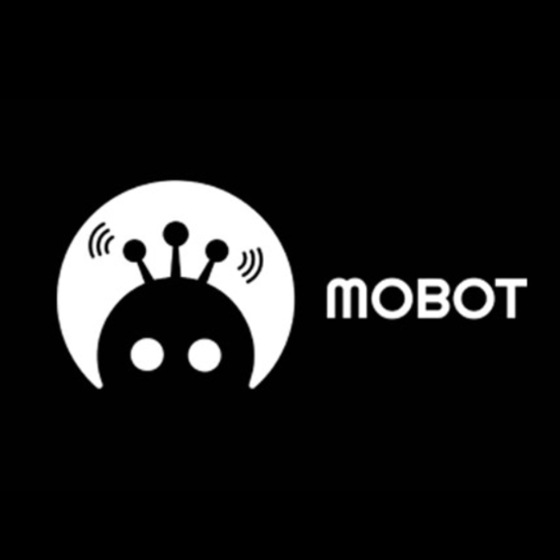10 Best Black Box Testing Tools Shortlist
Here's my pick of the 10 best software from the 15 tools reviewed.
Our one-on-one guidance will help you find the perfect fit.
When you’re testing software from an end-user’s perspective, you need tools that can uncover bugs, validate functionality, and ensure the experience is seamless—all without diving into the source code. But finding the right black box testing tool isn’t always straightforward. Maybe you’ve struggled with tools that lack the precision or flexibility you need, or you’ve wasted hours trying to adapt solutions that just don’t fit your workflow. It’s frustrating, especially when your goal is to deliver high-quality software quickly and efficiently.
Black box testing tools are designed to take the guesswork out of the process, enabling you to simulate real-world use cases, catch critical issues, and ensure your software meets user expectations. Over the years, I’ve worked with a wide range of these tools across diverse projects and teams. Drawing from this experience, I’ve created this guide to help you cut through the noise and choose the best black box testing tool for your needs—one that streamlines your testing process and delivers real results.
What Are Black Box Testing Tools?
Black box testing tools are software used to test the functionality of other software without any knowledge of the internal workings or code structure. These tools focus on examining the input and output of the software under test, assessing its behavior and functionality as experienced by the end user. They are used for various types of tests, including functional, system, and acceptance testing, without requiring access to the source code.
The benefits of black box testing tools lie in their ability to provide an objective assessment of a software's external functions. They help ensure that the software meets user requirements and behaves as expected in real-world scenarios. These tools are particularly useful for identifying discrepancies in software functionality and user interface, making them ideal for testers who may not have in-depth technical knowledge of the software's internal design. This approach helps in delivering a user-centric product, improving overall software quality and user satisfaction.
The Best Black Box Testing Tools Summary
| Tool | Best For | Trial Info | Price | ||
|---|---|---|---|---|---|
| 1 | Best for human-led black box testing | Free demo available | Pricing upon request | Website | |
| 2 | Best for AI-driven test maintenance | 14-day free trial | From $212/month | Website | |
| 3 | Best for outsourcing tough black box tests | Free trial + free demo available | Pricing upon request | Website | |
| 4 | Best C# Automated Unit Testing Framework | Not available | Website | ||
| 5 | Best for creating black box test scripts with a test recorder | Free demo available | Pricing upon request | Website | |
| 6 | Best for black box testing microservices and container-based applications | 30-day free trial | From $300/month/service | Website | |
| 7 | Best web application black box testing tool In Ruby | Not available | Free To Use | Website | |
| 8 | Best automated black box testing framework for native, web, and hybrid Android apps | Not available | Open source and free | Website | |
| 9 | Best end-to-end test management platform | 30-day free trial | From $25/month | Website | |
| 10 | Best all-in-one test automation framework for black box testing | 30-day free trial | $3590/year | Website |
-

Docker
Visit WebsiteThis is an aggregated rating for this tool including ratings from Crozdesk users and ratings from other sites.4.6 -

Pulumi
Visit WebsiteThis is an aggregated rating for this tool including ratings from Crozdesk users and ratings from other sites.4.8 -

GitHub Actions
Visit Website
Overviews Of The 10 Best Black Box Testing Tools
Here’s a brief description of each tool to showcase each one’s best use case, some noteworthy features, and screenshots to give a snapshot of the user interface.
QA Wolf is an automated hybrid testing platform and service designed to simplify and enhance the quality assurance process for web applications. It offers black box testing and automates end-to-end tests, ensuring that applications function correctly from the user's perspective.
Why I picked QA Wolf: QA Wolf offers a unique combination of automation and human oversight. The platform allows for automated end-to-end tests, which mimic real user interactions with the application. This approach ensures that all critical user flows are thoroughly tested without requiring insight into the underlying code. Furthermore, QA Wolf’s human QA engineers provide ongoing support, triage, and maintenance of tests, ensuring reliability and reducing the burden on development teams.
QA Wolf Standout Features:
- The platform runs tests in parallel, reducing testing time and accelerating feedback loops.
- Provides detailed bug reports with video walk-throughs and trace logs, making it easy for developers to diagnose and fix issues.
- Supports a wide range of test scenarios, including UI interactions, API testing, and third-party integrations
- Round-the-clock QA engineers provide continuous support, reviewing test failures and maintaining test suites, ensuring consistent quality.
QA Wolf Integrations: Jenkins, CircleCI, GitHub, Jira, Asana, Linear, and more.
Pros and cons
Pros:
- Easy to communicate and collaborate with the QA Wolf team
- All bugs are human-verified
- Automated end-to-end tests
Cons:
- Limited flexibility with test customizations
- Not ideal for teams wanting full control over the testing process
Reflect is a black box testing platform that helps you automate functional tests without needing to access or understand the internal code. Its use of Generative AI lets you create tests by simply describing user interactions in natural language. The platform interprets these inputs and generates tests that focus solely on behavior and outcomes, aligning with black box testing principles.
Why I picked Reflect: I picked Reflect because it takes all the guesswork and technical overhead out of test creation. Instead of dealing with flaky selectors or scripting frameworks, you can type what you want to test and let the tool handle the rest. It’s especially useful when your goal is to validate how your app behaves from the outside—what users actually see and do. Reflect also offers AI-driven maintenance, adapting tests automatically when the UI changes, so you don’t have to do the manual work.
Reflect Standout Features:
- Turn plain-English prompts into test steps—no need for XPath or selectors
- Combine visual checks and API validation in a single test
- Automatically updates tests as the app UI evolves
- Schedule tests and receive real-time failure alerts via Slack or email
- Use parameterized inputs to cover more scenarios without duplicating work
Reflect Integrations: GitHub, Slack, Jira, Jenkins, CircleCI, Azure DevOps, Linear, Bitbucket, Codefresh.
Pros and cons
Pros:
- No-code test creation
- AI-powered test maintenance
- Comprehensive CI/CD integration
Cons:
- Limitations to mobile app testing
- Could offer more customization options for test configurations
Mobot is an automated testing tool designed to streamline mobile and web testing by giving testing responsibilities to a mechanical robot. As a result, all tests are almost entirely manual, with the robot carrying out functions and comparing them to a baseline in order to produce a report.
Why I picked Mobot: Due to its manual testing environment, Mobot test plans do not need to include code or even writing. All you need to do is film the test you'd like to run and explain exactly how you want it to be done. The Mobot team can easily convert the video into a custom test plan. Once the plan is automated, the robots can carry out multiple tests at once and generate a report that you can use to identify and fix bugs.
Mobot Standout Features:
- All of Mobot's results are carefully verified by a customer success manager who will flag certain tests for discussion and point out failed tests to make reading reports that much easier.
- All reports include side-by-side testing results compare test screenshots to baseline screenshots.
- Robots perform tests on real devices to help identify device-specific issues, rather than relying on emulators and simulators.
- Robots can also test Bluetooth connections between the testing device and various third party devices, such as headphones.
Mobot Integrations: Mobot integrates with tools like Jira, Slack, and Github. It also supports both Android and iOS.
Price: Mobot pricing starts at $1,500/month/action. Further pricing information is available upon request. A 30-day free trial is available.
Pros and cons
Pros:
- No-code setup saves a lot of time
- Each client receives a Customer Success Manager (CSM) to assist throughout the process
- Condenses 5-days of human-powered testing into 1-day of automated testing
Cons:
- Limited software integrations
MbUnit is a generative and extensible unit testing framework for the C# release by the open Gallio Automation Platform. Previously known as GUnit, MbUnit is feature-rich and comes with a common object model that other test frameworks can capitalize on.
It is simple to use and follows the Simple Test Pattern design pattern to boost the testers’ output, using SetUp, Test, and TearDown actions. MbUnit also comes with XML and serialization assertions.
MbUnit Standout Features
- MbUnit provides a common object model, including a runtime service for the .NET framework. Other test frameworks can use this to extend their own capabilities.
- MbUint uses the Assert class, along with other variations of its unit testing event actions. This also includes support for unit testing your XML code.
- To get the most out of your core multi-core CPU, especially with execution-heavy test suites, MbUnit allows you to mark any test as parallelizable. This subsequently enables the marked test to run parallel with other parallelizable tests in the same fixture.
MbUnit Integrations: No clear-cut integrations are identified except for the implied assumption that it can be plugged in by apps and test suites that use the .NET framework.
Pros and cons
Pros:
- Offers testers a rich plug-in model that can be used in other frameworks
- A fluent interface that’s easy and intuitive
Cons:
- It suffers from a lack of adequate documentation
Best for creating black box test scripts with a test recorder
The IBM Rational Functional Tester is an automated testing framework from IBM for regression, functional, and GUI testing. It can be used for different programming languages and environments, such as Java, AJAX, Power Builder, SAP, .Net, Dojo Toolkit, and Siebel, while encompassing both web-based and terminal emulator-based applications.
Why I picked IBM RFT: the tool gives test engineers the ability to record, playback, and export test scripts with Robotic Response Time agents. In addition, it provides intelligent script maintenance capabilities and various customization options.
When manual testing is impossible to scale effectively, RFT is ideal for a broad range of scenarios. It benefits businesses and organizations of various types, from freelancers, and SMBs, to enterprises. The tool has reporting capabilities that support communication and collaboration in hybrid environments.
RFT Standout Features
- IBM Rational Functional Tester provides capabilities for the end-to-end testing of seemingly diverse systems, which yields a broad range of coverage for QA teams. It allows the flexibility to test legacy and modern applications in different business scenarios.
- RFT facilitates the acceleration of shorter test cycles because it enables test engineers to reuse the same tests with different data sets.
- RFT’s advanced test scripting features, like its Rational Performance Tester. It lets you view and analyze the response time, events, and other metrics during playback. With its ScriptAssure technology, you can handle frequent user interface changes remarkably without incurring much maintenance overhead.
RFT Standout Integrations: RFT provides integrations with other IBM products, such as IBM Jazz® integration, which supports collaborative application lifecycle management. It also integrates with non-native enterprise messaging solutions like JMS and TIBCO EMS.
Price: Pricing is only available upon request. RFT’s Starter Edition is free.
Pros and cons
Pros:
- Works well with mainframes
- The ability to easily switch between languages and platforms
- Provides reliable testing at scale
Cons:
- It is difficult to get optimal results with complex Java apps.
Gremlin
Best for black box testing microservices and container-based applications
Gremlin is an automation framework for systematic and resilience testing based on chaos testing, a subset of chaos engineering. It is geared toward the modern era of computing, as it is helpful for testing cloud apps, microservices, and container-based applications.
Why I picked Gremlin: the tool deliberately breaks things in the tested app and then learns how to make it resilient. It does this by executing tests that allow testers to manipulate inter-service messages at the network level.
The tool’s zero-regression approach helps to minimize service disruptions and code rollbacks that typically attend poorly resilient software products.
Gremlin Standout Features
- Testing failure handling capabilities in cloud infrastructure and applications such as containers and microservices.
- Gremlin’s test automation allows you to test each application layer of infrastructure rigorously, including safely halting and automatically rolling back.
- It comes with a well-documented API and CI/CD to prepare ship quality code fast by running tests that magnify system reliability.
- With Gremlin, you can use a set of 12 Chaos engineering experiments to test for weaknesses in an underlying system.
Gremlin Integrations: Gremlin integrates with LoadRunner Professional 2022.
Price: Gremlin’s pricing starts at $300 per month per service. A 30-day free trial is available.
Pros and cons
Pros:
- Its testing helps improve outcomes across your technology stack
- Provides engineering teams with reliable, high-velocity testing
- Easy to learn and use
Cons:
- Gremlin only provides limited support for on-premise chaos injection
Watir, which stands for “Web Testing Application in Ruby,” is an open-source, automated test tool for the Ruby programming language.
Why I picked Watir: One of the ideal things about this black box testing tool is that it enables the writing of tests in a human way by simulating how users interact with a browser.
It is testing based on automating your browser with Ruby libraries. The tool achieves this by leveraging the built-in OLE capabilities of Ruby to automate browsers.
Watir Standout Features
- Instead of creating a browser simulator like most web-based testing systems, Watir uses OLE protocol to enable a smoother inter-process communication between the browser and Ruby libraries.
- Watir supports the most common and relevant browsers, such as Chrome, Firefox, Internet Explorer, Opera, and Safari.
- Watir boosts the efficiency and effectiveness of your tests and test suites by enabling you to run tests simultaneously.
- Watir facilitates command-line testing so you can execute UI tests without opening a browser, also known as headless testing.
- With page objects, Watir allows testers to reuse code as classes, minimizing code duplication. Meanwhile, it also allows you to measure page performance using its performance object and related properties.
Watir Integrations: Provides integration for cross-browser and automation testing tools such as Cucumber, BrowserStack, and SauceLabs. In addition to Ruby, it also integrates with Python, Rails, and Selenium.
Price: Watir is open-source and free.
Pros and cons
Pros:
- Using the Ruby language to write test scripts.
- OLE-based testing with Ruby libraries eliminates the need for an external server.
- Free, open-source, and very easy to use.
Cons:
- It is only supported by the Ruby framework, and so can’t be used by any other test framework.
Best automated black box testing framework for native, web, and hybrid Android apps
Selendroid is a test automation framework for native or hybrid Android web apps. It is an open-source project based on the Android instrumentation framework.
Why I picked Selendroid: Using emulators as well as hardware devices, Selendroid boosts test efficiency with its capability to interact with several devices simultaneously, making it a great choice for black box testing Android web apps. To write tests, you’ll need to use Selenium 2 client API, also known as Selenium web driver.
Selendroid Standout Features
- Automating user actions and interactions over a mobile application.
- Provides full compatibility with JSON Wire Protocol and Selenium 3 Ready.
- Selendroid provides the advantage of being able to use both
- Scalability and parallel testing are achieved through the ability to integrate emulators and real devices as a node into the Selenium grid.
- Flexibility to extend its runtime with user-generated extensions.
Selendroid Integrations: In addition to providing support for hot plugging of hardware devices, it supports full integration with Selenium frameworks.
Price: Selendroid is open-source and free.
Pros and cons
Pros:
- You don’t need to modify the app under test to automate it.
- There is no duplication of effort as the same concept is used to automate native or hybrid apps.
- The ability to test various kinds of android devices.
Cons:
- To successfully use Selendroid requires testers also to have knowledge of Selenium.
Katalon Studio is a free, comprehensive automation testing toolkit with a Selenium-based engine, although it has introduced priced upgrades.
Why I picked Katalon: It is an AI-augmented platform to produce automated tests and uses Groovy as a language. However, Katalon allows you to reuse automated scripts without coding. It provides web, API, visual, desktop, and mobile testing. Powered by its end-to-end software development ecosystem, Katalon enables DevOps to deliver solutions quickly.
Katalon Standout Features
- Katalon also offers beginners a low-code experience with reusable test artifacts and a unified IDE to test all apps.
- With a runtime engine that streamlines execution, Katalon fosters scheduling, self-healing, smart waits so you can run parallel execution in browsers, devices, and OS.
- Katalon’s extensive data and keyword-driven testing, coupled with autonomous script generation, provides actionable insights and effective root-cause analysis.
- Native CI/CD offers real-time notifications and holistic end-to-end pipeline visibility while providing experts an abundant DevOps integrations.
- Fast and auto-record-and-playback that quickly responds to real-world scenarios.
Katalon Integrations: Katalon can be integrated with CI/CD tools such as Jira, Bamboo, and Jenkins.
Price: Katalon is free, but it also has Premium and Ultimate plans. The Premium plan starts at $25 per month, and you need to contact Katalon for a quote on its Ultimate plans.
Free trial: In addition to a forever free plan, the Premium plan offers a 30-day free trial period.
Pros and cons
Pros:
- Integration with other DevOps platforms
- Parallel test execution
- Fast script creation time
Cons:
- It has a significant learning curve, so not suited for beginners
Ranorex Studio is a full-featured test automation platform provided by Ranorex GmbH. it provides rapid delivery test automation for desktop, web, and mobile applications. In addition to functional UI tests, Ranorex provides various testing approaches, such as black box, data-driven, regression, key-word driven, and cross-browser testing.
Ranorex is flexible and provides codeless automation. This makes it ideal for both beginners and testing experts. It provides a user-friendly and intuitive interface that allows users to easily drag-and-drop UI elements and code modules.
Ranorex allows cross-functional teams to collaborate effectively by sharing test automation modules and other repositories and reusable objects.
Ranorex Standout Features
- You can use Ranorex to script with programming languages such as VB.NET and C#. it also supports many technologies such as .NET Core, Java, C++, Microsoft Access, Power Builder, and more.
- Ranorex allows you to generate powerful scenarios in your test environment and injects crucial variations.
- In addition to testing mobile and native iOs environments, Ranorex can run regression tests on both virtual and physical machines.
- Machine-trained object detection and intelligent code completion properties and reusable modules with coded automation.
- In addition to recording and replaying test actions, Ranorex has the ability to run parallel tests.
- You can generate test reports in HTML, JUnit-compatible reports, or PDF, including video reporting of test execution.
Ranorex Integrations: Ranorex comes with a built-in Selenium WebDriver which enables it to be versatile and distributed. Other integrations include Jenkins, Jira, TestRail, Azure DevOps, TestShell, Microsoft Studio, SQL, Git, and so on.
Price: Pricing is customized and available upon request. A 30-day free trial is available.
Pros and cons
Pros:
- Useful for both manual and automation testing.
- Provides a good API for integration
- UI object identification of elements during testing
Cons:
- Some users may fight the test setup complicated
Other Black Box Testing Tool Options
Here are a few more options that didn’t make the top list:
- SilkTest
Black box automation tool for regression and functionality testing
- AutoHotkey
Windows macro-creation automation tool for keyboard and mouse functions
- Selenium IDE
Record and playback automated IDE
- QTP/UFT
Automated testing tool with minimal system monitoring
- Squish
For graphical user interface (GUI) black box testing
How I Selected the Best Black Box Testing Tools
To build this top 12 list, I first evaluated and compared a wide range of black box testing solutions with positive user ratings. After determining my list of top choices, I further honed my list by using the selection criteria below to see how each platform stacked up against the next. I also drew on my years of QA experience to pinpoint the features that add value to the software testing process.
The ability to allow users to define the scope of tests easily. The tools should enable users to specify the priorities for the test run. For instance, if some parts need to be manual or the level of expertise required.
Selection Criteria
Here are the selection and evaluation criteria I used to develop my list of the best tools for this article:
User Interface:
Because black box testing is opaque, its user interface should be complementary, operate with clarity, and have a user-friendly UI.
Usability:
I looked for the ability of the black box testing tool to empower testers with effective functional and regression features, along with the ability to apply these with little or no friction. They should also be useful for a range of black box testing techniques.
Software Integrations:
I favored software integrations that are broad-based, allowing black box testers to work across several domains, environments, and platforms.
Pricing:
Users want a black box testing tool that is a bargain—cost-effective enough that they can afford it without breaking the bank while providing more value for money.
People Also Ask
Here are a few common questions answered about black box testing.
What is Black Box Testing?
Black box testing vs. white box testing
What are the Key Features of Black Box Testing Tools?
Black Box Testing Techniques
More Software Testing Tool Lists
The black box testing tools are important to include in your QA tech stack, no kit is complete without a full suite of testing software. Below are some other tool lists I've reviewed during my time as a software testing.
Complete your software testing skillset
Black box testing is only a small practice within the grander software testing field. To hone your craft, learn more about these testing practices and tools from our team of QA professionals!
Also, kindly sign up for our newsletter to get the latest insights from top thinkers in the niche. Moreover, check out related single-intent articles or software comparisons on our site.























